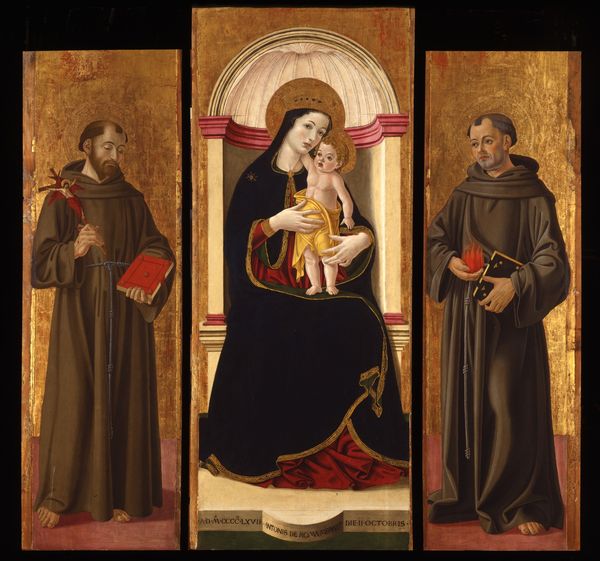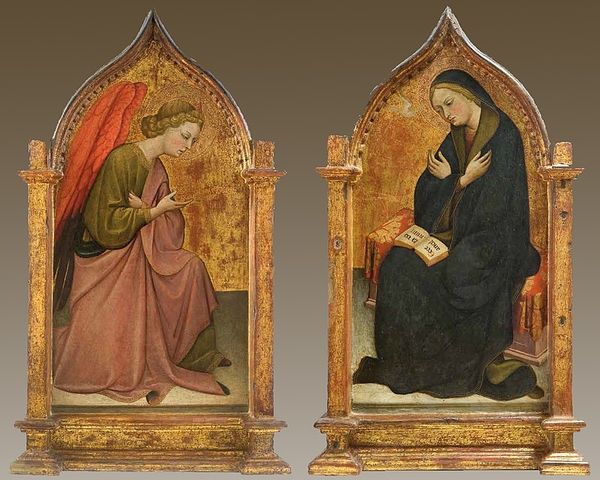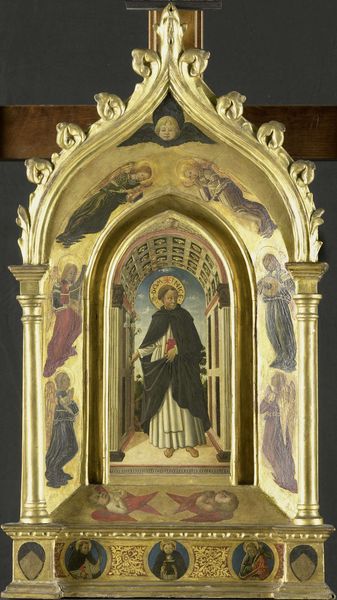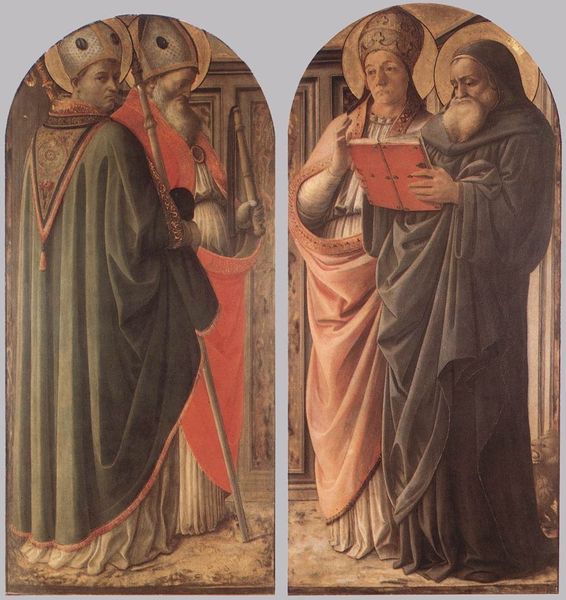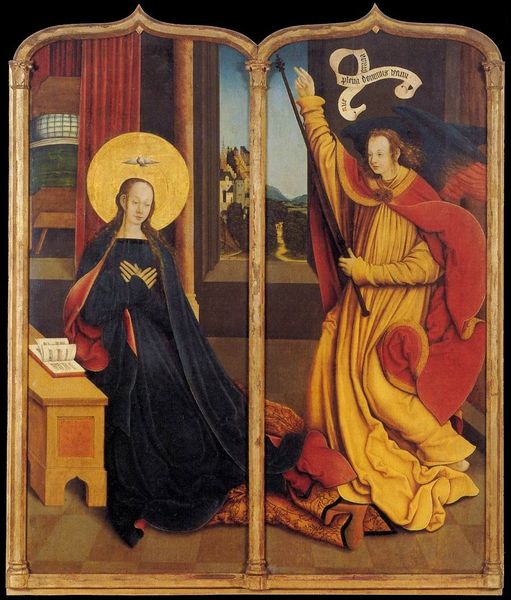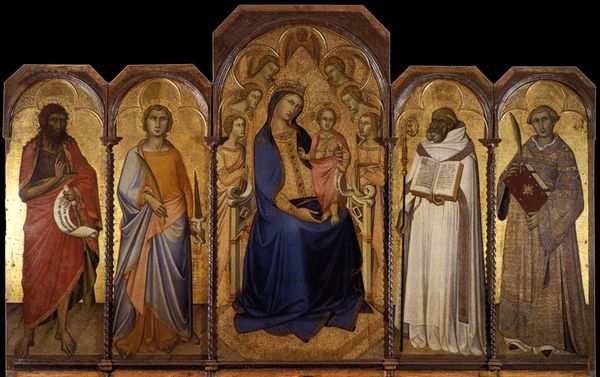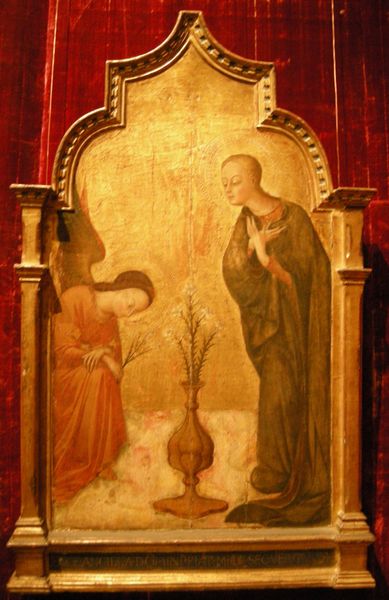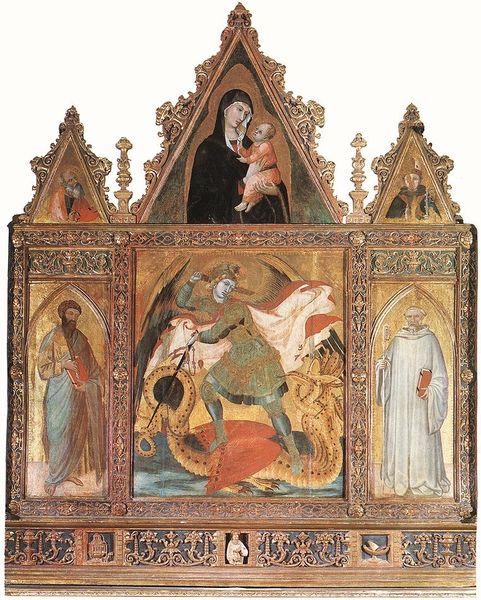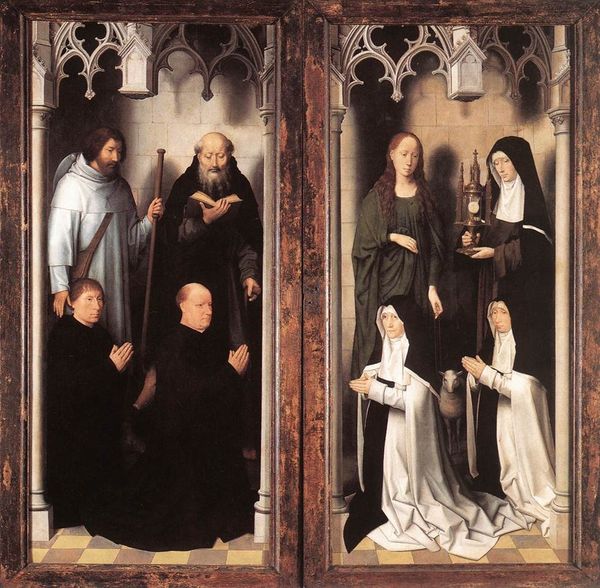
carving, painting, oil-paint
#
portrait
#
medieval
#
carving
#
narrative-art
#
painting
#
oil-paint
#
sculpture
#
landscape
#
holy-places
#
figuration
#
historic architecture
#
traditional architecture
#
oil painting
#
christianity
#
history-painting
#
academic-art
#
italian-renaissance
#
early-renaissance
#
historical building
Dimensions: 183 x 59.5 cm
Copyright: Public domain
Curator: This diptych is “Madonna and Child, St Francis of Assisi,” created by Carlo Crivelli around 1472. These are oil paintings, and what strikes me most is their presentation within these ornate, almost architectural frames. Editor: Yes, the frames definitely heighten the work's almost otherworldly feel! The gold backgrounds too... There’s a sense of distance despite the intimacy of the Madonna and Child on the left. Curator: Precisely. I find myself drifting between the grounded weight of St. Francis’s earthy brown robe on the right and then pulled up toward the gilded, almost celestial space around the Madonna. I can imagine the original owners felt a strong desire for contact, an intercession. Editor: It's interesting you say that, especially with Francis. Remember, he devoted himself to a life of poverty and service, ministering to the marginalized and excluded in society. So, placing him alongside this Madonna feels quite deliberate. It asks us to reflect on not just spirituality, but on service, equity, and devotion. Curator: Service and equity for sure. But do you also notice how St. Francis has his stigmata showing in this almost understated way? I read that as Crivelli offering a complex statement of belief through this composition. The suffering and ecstasy existing simultaneously... Editor: A radical compassion that unsettles binaries. The figures are both divine and mortal; powerful and vulnerable. How interesting to see the blend of carving and oil painting too! I suppose this makes sense considering it’s right in the thick of the early Renaissance! Curator: Yes, it's all here, the tactile sculptural aspects next to the blossoming pictorial revolution! As if we can’t forget this physical plane. Crivelli is constantly reminding us. Editor: I find the historical context especially thought-provoking today. Who was Crivelli speaking to when he made this? How did these devotional figures impact the communities they served? And how can we carry these histories forward to shape new visions of a better future? Curator: Questions layered on questions. In a way, I feel that's precisely what Crivelli's vision invites. To dwell in complexity, even paradox, which is very welcome and very necessary today.
Comments
No comments
Be the first to comment and join the conversation on the ultimate creative platform.



